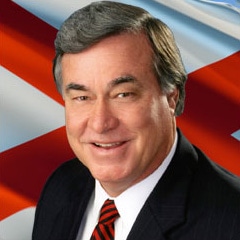The 2010 census data paints an interesting landscape of Alabama’s demographics. There are dramatic shifts but the results are not surprising. We have been told and have seen these obvious trends develop over the past decade. However, it is only when the actual final figures are told and you see the present picture of our population that the conclusive scenario hits home.
For the first time we are an urban rather than a rural state. Approximately one half of our population lives in one of our four metropolitan areas. The largest of the metro areas is the Birmingham-Hoover area, which includes the seven counties of Jefferson, Bibb, Blount, Chilton, Walker, St. Clair and Shelby. The Huntsville and Madison-Limestone area is now the second largest metro area followed by Mobile and then the four county Montgomery metropolitan area. Approximately 51% of our people live in these four major metro areas all along the I-65 corridor.
The growth within these metro areas has not been equal. The suburban enclaves of the metropolitan areas have exploded at even a larger degree than demographers predicted. More affluent Alabamians are migrating to suburban enclaves at a rapid clip. They want to enjoy the amenities of the city but prefer their own school systems and nicer homes in more upscale and newer subdivisions. Most of these suburbanites work in the city but live in an adjoining suburban county. This trend is not new. After the 2000 census they were referred to as bedroom counties. Their growth has become so pronounced this past decade that they are now too big to be described as simply bedrooms.
This obvious growth pattern is most telling in Birmingham and Montgomery. In Birmingham, five of the suburban counties have seen double digit gains. Two of those, Shelby and St. Clair, are the fastest growing in the state. They have increased 36% and 29%, respectively.
The same story exists in Montgomery. White Montgomerians have fled the city for Autauga and Elmore counties, which grew by 25% and 20%, respectively. This Montgomery adjustment has made the Capital City a majority African American city. This was already the case with Birmingham and Mobile. Therefore, the obvious picture of our metropolitan areas is that the inner cities are totally Democratic while the suburbs are predominantly Republican.
In terms of pure population gains, Huntsville was the clear winner. Huntsville’s metropolitan area, which consists of Madison and Limestone counties, grew an amazing 22%. Huntsville’s growth catapulted it past Mobile and Montgomery to become the state’s second largest metro area. This significant growth in the Rocket City was spurred by the base relocation process which smiled on Huntsville. This nationwide realignment of military bases brought thousands of new and high paying jobs to Huntsville. It was the major impetus for their growth.
This area continues to be the economic bright star for Alabama. A cursory look at the educational level and average income of this Tennessee Valley metropolis makes you wonder if you are looking at a section of Alabama. It appears as though a portion of the Silicon Valley of California or Research Triangle of North Carolina was transferred to North Alabama. Huntsville’s per capita income and educational levels dwarf the rest of the state.
Not surprisingly the Black Belt and the rural areas are the big losers. This again is a trend that set in several decades ago and has continued over the last decade.
For the second consecutive decade the largest growth county in the state has been Shelby. They grew an eye popping 36% and added 51,972 people. Shelby now has a population of 195,085 and has passed Tuscaloosa County to become the fifth largest county in the state.
Our state has become somewhat more diverse. Statewide, the Hispanic population grew from 1.7% in 2000 to 4% in 2010. The state’s Asian population increased by 53,595 residents to 1.1% of the population. Alabama’s African American population remained about the same at 26%.
The legislative reapportionment office is digesting these population figures. The legislature is mandated to draw new congressional districts this year reflecting equal numbers of people. Our super Republican majority legislature should have very few problems redesigning districts that will keep the six to one Republican advantage in our congressional delegation. The population growth patterns make it easy.
See you next week.

Steve Flowers
Alabama’s premier columnist and commentator, Steve has analyzed Alabama politics for national television audiences on CBS, PBS, ABC and the British Broadcasting Network. Steve has been an up close participant and observer of the Alabama political scene for more than 50 years and is generally considered the ultimate authority on Alabama politics and Alabama political history.